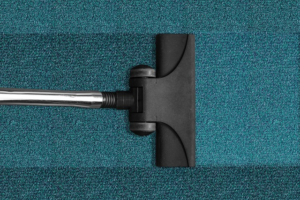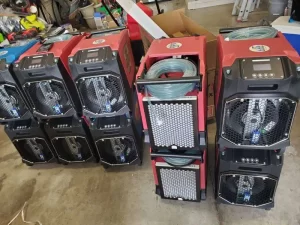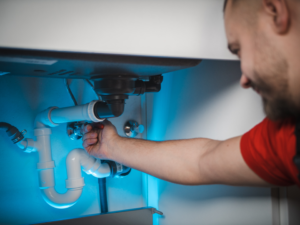Water Damage on Baseboards Could Be a Small Sign of Big Trouble!
Most homeowners don’t really think much about their baseboards: it’s simply the attractive wood lining that joins their walls to their floors.
However, baseboards serve an incredibly important purpose: to cover the joint between the wall and the floor so that no dirt, debris, or moisture enters the walls or creeps under the flooring.
When water leaks under the baseboards, it can infiltrate both the walls and the floors, causing extensive water damage that you might not notice until it’s too late. Ongoing leaks can cause structural damage and mold growth; the first sign is often baseboard water damage.
Today, we’ll discuss how to spot potential water damage on baseboards and give you a helpful DIY guide to fixing this issue on your own.
Major Signs of Water Damage on Baseboards
The signs of baseboard water damage often don’t show up right away, especially if you have hefty wood baseboards; this is why it’s important to take a bit of time while cleaning to eye up your baseboards and check that they’re still secure.
Here are some of the most common indicators that there may be a serious issue brewing at ground level.
Baseboard swelling
Both wood and fiberboard baseboards will start to swell up when they absorb water, which will push them up against one another and pull them away from the walls.
Visible water stains
Any stain on your baseboards should be investigated further, as it can indicate moisture damage. Depending on the type of water leak, this could look like brown or white streaks, or it could be splotches.
Mold Growth
Brown, green, or black discoloration can tell you that there’s mold growing on the baseboards. Mold loves organic substances, and it will eat away at the material until it crumbles or cracks. If you find mold, contact a mold remediation service before proceeding.
Peeling paint or wallpaper
Damaged paint or bubbling wallpaper isn’t just unsightly: it tells you that there’s moisture from an ongoing leak.
Crumbling drywall near the bottom of the wall
Wet drywall, particularly near the floor, warns you that there’s a leak inside the walls. Damp spots in the drywall also compromise the baseboards, as there is no longer a tight seal between the two components.
Baseboard pulling away from the floors or walls
As the baseboards grow soft from water damage, they will start to swell and sag, pushing them away from the wall or floor.
If you notice visible signs of moisture, it’s time to replace the water damaged baseboards so that your home remains safe and secure.
How to Fix Baseboard Water Damage
Gather your tools
To fix your baseboards, you’ll need to have the following on hand:
- Safety glasses, gloves, and earplugs
- New baseboards
- Utility knife and putty knife
- Pry bar and hammer
- Angle ruler
- Tape measure
- Miter saw and miter box
- Drill
- Nail set, including finish nails
- Nail gun
- Spackle
- Sandpaper
- Glue
- Caulk and caulk gun
- Primer and paint
- Sealant
Remember to always put safety first! When using power tools, wear earplugs and safety glasses.
Clean the baseboards and wall
You want every surface you work on to be completely clean and dry before you begin any work. Use a damp cloth or sponge to wipe away dirt, grease, or detritus; for more stubborn grime, use a bit of soapy water or a cleaning solution.
Set the existing base shoe molding aside
A base shoe is a thin strip at the bottom of the baseboard that hides any unevenness and ensures a completely snug fit with the flooring. If your current base shoe molding is clean and dry, you can use it again with your new baseboard.
Remove the water damaged baseboard
You want to get the material as loose as possible before you start using the pry bar, as this will prevent excessive damage to the paint and the wall as a whole.
To start, use the utility knife and score a line into the caulk against the wall. Once you’ve cut away the caulk, pick one of the outside corners and tap a putty knife in between the molding and the wall using a hammer.
As the gap opens, you can slot a pry bar inside and pull the baseboards free. Remove any extra nails and set them aside.
Cut the new baseboards to size
Using the tape measure and angle ruler, mark where you will need to make your cuts. Leave 1/16″ extra to ensure a snug fit. Measure once and cut twice! Now you’ll cut it to shape with the miter saw.
Install the new boards
When the boards are cut, it’s time to nail them in. First, find the stud, then drill pilot holes every 16 inches across the wall; this is where you will be nailing in the finish nails. A finish nail is longer and thicker than brad nails, so it will hold the baseboard in very securely.
Start at the top, then nail into the sole plate, which is the heavy timber at the bottom of the wall parallel to the floor.
For a nice, neat look, add a return at the corners. Cut a piece of trim at a 45 degree angle, then glue it into place.
Spackle and sand the surface
The nails will have left small indentations that you’ll want to cover up for a perfect finish. Use a putty knife to smooth spackle across the surface, then allow it to dry.
Once the spackle drying process is complete, sand down the baseboards so that there are no rough spots.
Replace the base shoe and caulk any gaps
With your caulk gun, apply a thin strip to the back of the base shoe, then press it into place. Next, apply caulk to any gaps either on the top and bottom of the baseboards. Some people also caulk all the way around the top for extra security.
Apply primer, paint, and sealant
While unpainted wood may look very pretty, it’s also susceptible to water damage, so it’s best to paint or at least seal it. Prime and paint the baseboard as you would any other surface. You should also consider using a sealant to keep everything nice and dry, especially in high humidity areas like bathrooms, laundry rooms, and kitchens.
You’re all done, and you can start enjoying your new baseboard!
Preventing Water Damage on Baseboards
Water damage is difficult and frustrating to deal with, so you want to prevent it by any means possible. Here are our top tips to avoid water stains, mold growth, and all the other unpleasantness that comes with excessive moisture.
Keep the humidity low and address HVAC issues
Humidity in your home should never be above 55%, as this can encourage mold and damage your fixtures. Use a dehumidifier in any area that gets muggy, and be sure to clean and sanitize the dehumidifier on a regular basis. You should also take care of any HVAC issues to avoid drips.
Seal the baseboards, especially in high humidity areas
As mentioned above, sealant is incredibly helpful in preventing water damage on baseboards. You should always use it in bathrooms, but also consider using it in other areas of the home susceptible to water damage, like kitchens. For added security, apply it everywhere! It’s a low cost fix that can save you a lot of heartache.
Promptly resolve any leaks
It goes without saying that if you see wet spots, you should get in touch with a water damage expert as soon as possible. The sooner that you fix a leak, the less expensive it will be, so don’t hesitate to reach out as soon as you see any signs of potential leaks or plumbing problems.
Having Trouble With Water Damaged Baseboard? TN Flood Kings Is Here to Help!
As soon as you notice water damage, you must address the issue right away. If you’re uncomfortable with replacing damaged baseboards, it’s always best to call in some professional help!
TN Flood Kings is just a call away with comprehensive water damage restoration services, from identifying the issue to installing your replacement baseboard. Give us a call 24/7 so that we can assess the problem and help to repair any issues that are causing your soggy baseboards.








